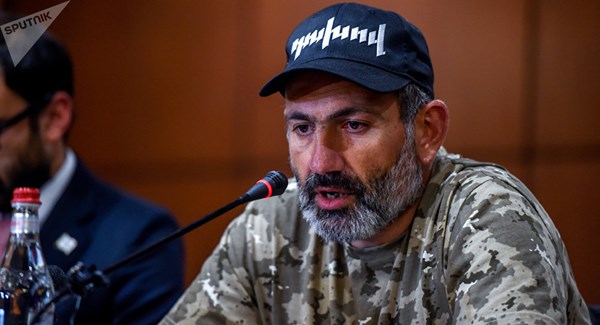Armenian Prime Minister: electronic warfare systems bought for $42 million failed to protect the sky over Nagorno-Karabakh
During the war in Nagorno-Karabakh, the electronic warfare systems purchased for $42 million did not work and failed to close the sky, stated Armenian Prime Minister Nikol Pashinyan during a video address to the nation.
"The sky was not "closed," ladies and gentlemen, because in 2017 we purchased $42 million worth of systems for the Armenian army (apparently referring to the deal to purchase Russian-made Repellent electronic warfare systems) which, as it turned out, simply did not work. The co-author of this deal allegedly makes sensational statements and says that he was offered a kickback to buy SU-30 fighter jets instead of this system, but he refused. And the broken systems bought without a kickback out of best motives and nobility?" he said.
Pashinyan added that for several months there has been talk about the inefficiency of the acquired anti-aircraft missile systems "Osa-AK", which, according to him, were bought after extensive discussions with experts. He added that it was this system that hit many targets during the war in Nagorno-Karabakh, and during the July escalation in Tavush downed AN Israeli drone "Hermes 900."
"For 2.5 years we bought everything we could. We had to raise salaries, solve the issue of feeding the military, supplying footwear, beds, buy assault rifles and ammunition, air defense systems, airplanes. Yes, we had to buy everything that hasn't been purchased in the last 20 years. Yes, we haven't done that in two years, and why haven't you done it in 18 to 20 years? And how were they (corrupt officials) able to buy islands, mansions, houses abroad, to save money in Swiss banks," he said.
On November 9, it was announced that Armenian Prime Minister Nikol Pashinyan, Azerbaijani President Ilham Aliyev and Russian President Vladimir Putin signed an agreement on the cessation of hostilities in Nagorno-Karabakh from 01.00 (00.00 GMT) on November 10. The parties agreed on a ceasefire, exchange of prisoners of war and the bodies of the dead, as well as deployment of Russian peacekeepers "along the line of contact in Nagorno-Karabakh and along the Lachin Corridor." The contingent, formed on the basis of the 15th separate motorized rifle brigade of the Russian Central Military District, should include 1960 soldiers with small arms, 90 armoured personnel carriers, 380 units of automotive and special equipment.
